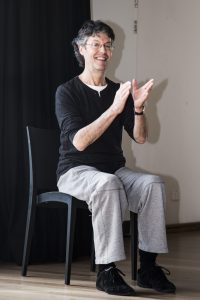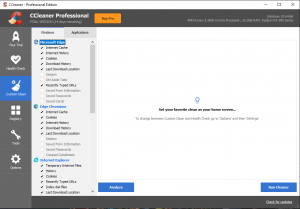Top twits persistently tweet policies to voters
SOCIAL media is a modern trend that is quickly becoming a permanent fixture in the lives of most Australians. It allows the general public to publish their opinions in an unregulated space (it is in fact, turning into a powerful form of citizen journalism)(Gillmor, 2009, pg40) and allows politicians and journalists to respond directly. For this reason it has been a central connection between politicians, voters and the media during the past two elections. With many politicians making use of such media in some way and journalists taking the time to participate in social media and use it in their formal election coverage, both had the opportunity to connect with the Australian public in a way never seen before.
To begin with, social media is a relatively new term best defined as “software tools that allow groups to generate content and engage in peer-to-peer conversations and exchange of content,” (Bottle PR, 2010). In fact these platforms have become so focused on content and opinion sharing that they have prompted the rise of citizen journalism to the extent that “the power to define what is news has been recast and decentred. Ordinary citizens…are appropriating new technological forms…to both challenge and augment mainstream media coverage of critical issues or events of concern to their lives.” (Moyo, 2008) The voting public had the opportunity to view the main political players’ every move in real time and could follow each election campaign through immediate links to video, audio, photographic or news based coverage and respond accordingly.
Julia Gillard and Tony Abbott both made use of Twitter, Facebook and You Tube during the election campaign, however to varying levels. Gillard and her staffers embraced the social media trend, with constant Twitter and Facebook updates and MySpace video interviews during the week preceding the election- in an attempt to capture Kevin Rudd’s younger audience, who had the potential to be swayed via the online sphere. She connected on a personal level with voters by following them on Twitter and inviting them to ask her questions which she would often directly reply to within the 140 character confines of the platform. Updates such as- “@Kkaren70 I'll deliver a stronger economy, better hospitals and schools. Read more here http://tinyurl.com/244xy5m JG #ausvotes” (Gillard, 19/8/2010) did address the public’s policy queries, however they were no different from a repetitive media interview and simply linked voters to official ALP campaign pages and news articles supportive of said party. Generally each post had the exact language of a practised policy spiel, however on the odd occasion, Gillard would try and bring her posts down to a more conversational level, for example “@ClimateElephant If I win you have a standing invitation to come to meet with me in Parliament House for a chat and a cuddle. JG #ausvotes” (Gillard, 20/8/2010). Gillard’s social media profiles gathered at least double the 22,000 followers of Tony Abbott, however never reached the 945,000 followers of her predecessor. What can be inferred from this is that rather than ditching the spiels and polished policy announcements to show voters the real Julia, she instead just kept pushing policy and did not stop to listen (Macnamara, 2010).
Tony Abbott, on the other hand, engaged in social media, but not to the same extent. He and his staffers rarely ‘tweeted,’ instead uploading photos on Flickr and Facebook, which gave those who followed him no more election campaign insight than what traditional media sources could provide. His Twitter account updated once during the week prior to the election and there was no attempt to connect personally in any way with the voters who followed him. While his personal website linked easily with his Twitter and Facebook accounts, he seemed to do little to connect with voters who had yet to decide which party to vote for and seemed to be stuck in the infinite loop of a limited Facebook page linking to Twitter and vice versa. It seems he spent more time focusing on older voters, rather than engaging younger generations within the online sphere.
The main influence of social media on the younger voters of the 2010 election was not via politicians, rather it was the journalists and other social media users who had the opportunity to push their opinions and link to hundreds of constantly updated news stories. Unlike the politicians, influential journalists in Australia used social media to give an overarching view of what was happening in the election- sans policy spiels. The ABC’s Annabel Crab is a good example, providing regular Twitter updates which were linked to various media stories on the particular topic, while also responding to voters with her take on a particular issue-“First Kevin question. How are you going to be different? JG: Sustainable Australia. Keenness on education. (was that not the case before?)” ( Crabb, 2010). The effectiveness of this style of social media use stands on two levels- it is always presented to the public on a very personal and conversational level, which unlike the politicians, makes voters feel included and engaged, and gives an actual opinion on issues usually just glossed over by other forms of media.
The role of traditional media during this election was also important in the decisions made by voters. Newspapers and their online counterparts, along with the major television networks employed reporters (like Crabb) to update on social media sites alongside their other journalism duties, also in an attempt to reach a younger, more malleable audience. These outlets focused on updating their reporting styles to take political candidates’ Twitter and Facebook activity into consideration when constructing stories. Furthermore, the use of these sites gave traditional media an opinion outlet that did not exist previously-they had the means to “challenge accepted media narratives” and move away from the usual focus on opinion polls and political gaffes (Bahnisch, 2008, pg8-11). Their usual coverage still existed however traditional media remained relevant to an interconnected audience and had the means to participate in the election on many levels.
The voting public of Australia during the 2010 election by no means had a shortage of political commentary and opinion to draw upon fuelled by the social media connection with politicians, journalists and other voters. As this was the first election to have made use of such media, it is possible to say that it was well used by several politicians like Julia Gillard to connect to the voters on a personal level, yet was underused by others. The medium was also well used by the traditional media outlets which had journalists both ‘tweeting’ throughout the campaign and using any information gathered through the medium to prompt timely stories- both online and in print. While voters may have felt disconnected from traditional TV and print coverage, the personal and interactive social media phenomenon gave them access to all facets of the election.
References:
Bahnisch, Mark (2008) Political blogging in the 2007 Australian federal election: Beyond citizen journalism and towards civic creativity. Pacific Journalism Review 10/2008, Vol. 14 Issue 2, p8-14. Retrieved September 3, 2010, from EBSCO Database: http://ezproxy.canberra.edu.au/login?url=http://search.ebscohost.com/login.aspx?direct=true&db=ufh&AN=35445776&site=ehost-live
Bottle PR (2010) Glossary: Social Media; Retrieved September 4, 2010 from http://www.bottlepr.co.uk/glossary.html
Crabb, Annabel (18/8/2010) Retrieved from Twitter, September 3, 2010:
http://twitter.com/annabelcrabb
Gillard, Julia (19/8/2010) Retrieved from Twitter, September 1, 2010:
http://twitter.com/JuliaGillard
Gillard, Julia (20/8/2010) Retrieved from Twitter, September 2, 2010:
http://twitter.com/JuliaGillard
Gillmor, Dan (2009), Media Users, Media Creators: Principles of Active Engagement, Nieman Reports, Fall2009, Vol. 63 Issue 3, p40. Retrieved September 3, 2010 from EBSCO Database: http://web.ebscohost.com.ezproxy1.canberra.edu.au/ehost/detail?vid=1&hid=17&sid=6a590d70-9aca-4be8-a351-bfd902c13f62%40sessionmgr10&bdata=JnNpdGU9ZWhvc3QtbGl2ZQ%3d%3d#db=aph&AN=44784543#db=aph&AN=44784543#db=aph&AN=44784543
Macnamara, Jim (2010) Pollies still missing the point of social media. The Sydney Morning Herald, August 4, 2010, retrieved September 3, 2010 from Sydney Morning Herald Online:
http://www.smh.com.au/opinion/politics/pollies-still-missing-the-point-of-social-media-20100804-11dkt.html
Moyo, Dumisani (2008), Citizen Journalism and the Parallel Market of Information in Zimbabwe’s 2008 Election, Journalism Studies, Aug2009, Vol. 10 Issue 4, p551-567. Retrieved September 3, 2010 from EBSCO Database:
http://web.ebscohost.com.ezproxy1.canberra.edu.au/ehost/detail?vid=1&hid=17&sid=68e81c62-57a5-4c82-adc5-e7dac1080ff1%40sessionmgr10&bdata=JnNpdGU9ZWhvc3QtbGl2ZQ%3d%3d#db=aph&AN=42532766




Recent Comments
0
Post Comment